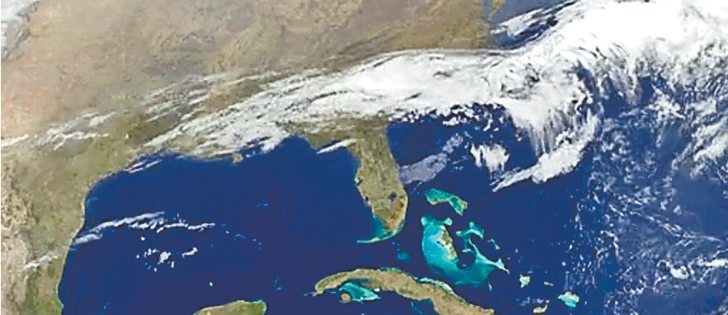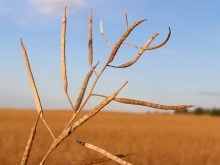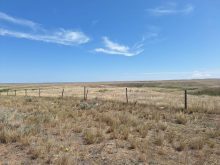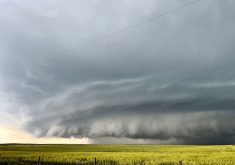The Commodity Classic is a gathering of the largest and most influential commodity based farm groups in the United States. Issues in the spotlight there often have wide-reaching implications for world markets and Canadian farmers. Western Producer reporter Sean Pratt attended the event held March 1-3 in Nashville, Tenn., and filed this report.
NASHVILLE, Tenn. — A dramatic change in weather patterns will likely result in a dry spring and summer for the Canadian Prairies and the northwestern U.S. corn belt, says a leading weather expert.
Read Also

Research looks to control flea beetles with RNAi
A Vancouver agri-tech company wants to give canola growers another weapon in the never-ending battle against flea beetles.
There are strong indications the world is doing a quick somersault from two years of La Nina to an El Nino weather event, which is bad news for western Canadian farmers.
“The majority of the Prairies could be facing a real moisture deficit,” said Bryce Anderson, senior meteorologist with DTN.
El Nino is characterized by the warming of the eastern Pacific Ocean, and there is clear evidence that is starting to happen. Water temperatures in that region of the Pacific increased 1.1 C in February.
“That’s a huge area and a huge (temperature) change in just a very short period of time,” Anderson told the 2012 Commodity Classic conference in Nashville last week.
“It’s almost like there was just a giant hot water faucet that got turned on out in the Pacific.”
Measurements of the Southern Oscillation Index indicate that La Nina is starting to fade at the same time that an El Nino event appears to be building.
Anderson said a quick switch to an El Nino event has happened six out of the 10 times there has been two consecutive years of La Nina-influenced weather, so the odds are good that is exactly what is happening. And it will likely be in full force by late spring.
El Nino springs tend to be dry in the western U.S. corn belt and wet in the eastern corn belt. Growers are already dealing with excess moisture in the east so there could be field work delays in that region.
Anderson anticipates warm conditions for the remainder of March from the central United States through the Canadian Prairies with temperatures 3 to 3.5 C above normal.
Summer will bring dry conditions to the Canadian Prairies, the northwestern U.S. corn belt and the southern Plains and near normal precipitation in the eastern corn belt.
He said it reminds him of 1976 when grain yields were above normal in Illinois, Indiana and Ohio but well below normal in Minnesota, Missouri, North Dakota and South Dakota.
“That was a real have and have not year when it came to rainfall and when it came to production,” said Anderson.
Production in North and South Dakota fell 30 and 35 percent below normal, respectively.
The latest U.S. drought maps show 57 percent of the country is experiencing some phase of drought, including developing droughts in the Dakotas. It’s no better north of the border, where many farmers in Western Canada have experienced a record dry winter.
That is not a good way to head into what appears to be a dry spring and summer. Anderson anticipates the production problems in the western corn belt will outweigh the good crops in the east.
The U.S. Department of Agriculture is forecasting an average U.S. corn yield of 164 bushels per acre, up from last year’s 147 bu.
“I think that’s a stretch. I really do,” said Anderson.
Anderson provided a quick roundup of weather conditions in other key grain producing and exporting regions:
- The Mato Grosso area of Brazil has good soil moisture conditions. There has actually been too much rain, which is hampering harvest and causing rust in the soybean crop.
- Soil moisture is much improved in Argentina, which is benefiting the soybean crop.
- There is talk about a big increase in Ukraine’s corn acres. Conditions are favourable in the central and eastern portion of the country, but Anderson reminded farmers that was also the case in February 2010, a year when crops later withered in drought.
- China has good soil moisture in its central and eastern portions.
- Central Europe is faring well, but soil moisture has been depleted in Spain and the dry conditions are creeping north into France, which is a major producer of grain.
“That’s kind of worrisome,” said Anderson.


















